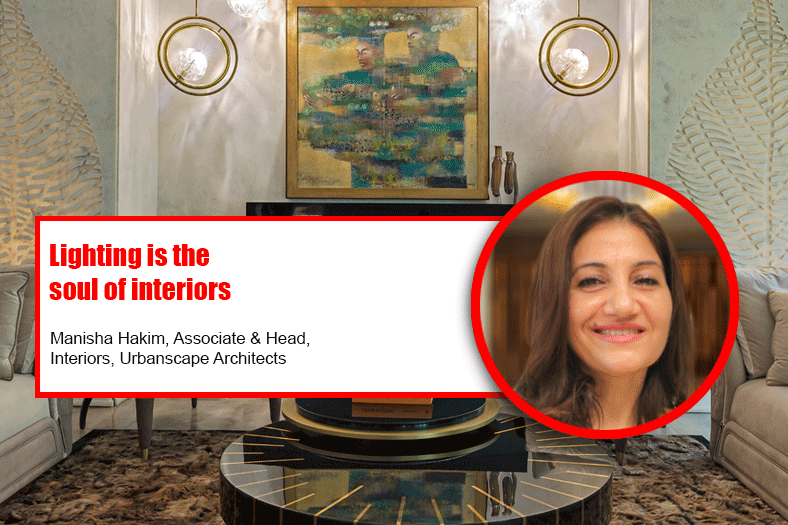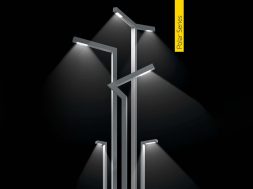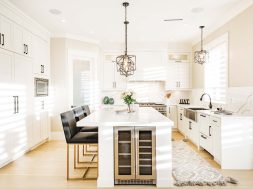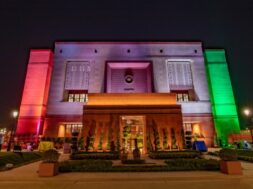
If lighting is not done right even a well-designed space won’t live up to its charm says Manisha Hakim, Associate & Head, Interiors, Urbanscape Architects.
What is the role of lighting in well-designed interiors?
I believe that lighting is the soul of interiors. An adequate amount of light can elevate one’s mood and energy levels instantly. It is scientifically proven that appropriate lighting can affect your concentration power and well-being in general. Lighting in its own special way can add to the aesthetics of the overall space. The ambience of any interior space is created predominantly by the type of lighting utilised. No matter how much one may spend on the furniture, artefacts and accessories, lighting is very essential, if not done right even well-designed interiors will not be able to make the desired impact.
How does mood-lighting aid in creating the desired dose of ambiance in a given space?
Mood lighting is done to infuse varied levels of ambience during different times of the day. You would want soft, dim lighting when you’re back home from work – relaxing and watching television with family, or you may want coloured, bright lighting when you are partying with your friends, etc. Hence, mood lighting depends significantly on the various functions of the space and the atmosphere one intends to create.
What are some of the important points to be considered before zeroing down on lighting for living spaces?
The choice of lighting depends on the function of the space and the area of the room, it also depends on the type of flooring and wall paints utilised. Generally in a space where the tiles and wall colour is sober the intensity of light will be different than in a space where darker tiles or paints have been utilised. The mood one wishes to create must be taken into account, likewise, for the brand conscious, personal preferences must be noted.
When it comes to lighting in retail and commercial spaces vis a vis residential spaces, how does it differ?
Residential lighting has much to do with personal preferences and ambience one wishes to create. However, in commercial spaces, the rules are a bit different. Commercial spaces need brighter lighting than residential spaces because of marketing and security reasons. Commercial lighting fixtures should be cost-effective, less decorative and more durable as compared to residential lighting, however, this can vary when it comes to bars, restaurants and boutique showrooms. Business feasibility has to be kept in mind while designing for commercial areas as energy conservation becomes very important due to the scale on which the lighting needs to be done.
In lighting, how can one incorporate energy efficiency in a given space, without compromising on the aesthetics?
It makes a lot of sense to ensure optimum use of sunlight, this will reduce the use of artificial lighting during the day. Light dimmers can be used, this in turn allows one to vary the intensity of light desired and save energy. Light design itself needs to be efficient so that excess use of artificial lighting is curbed. Likewise, lighting accessories which include hardware, fixtures and wires need to be selected wisely as well.
Cookie Consent
We use cookies to personalize your experience. By continuing to visit this website you agree to our Terms & Conditions, Privacy Policy and Cookie Policy.









